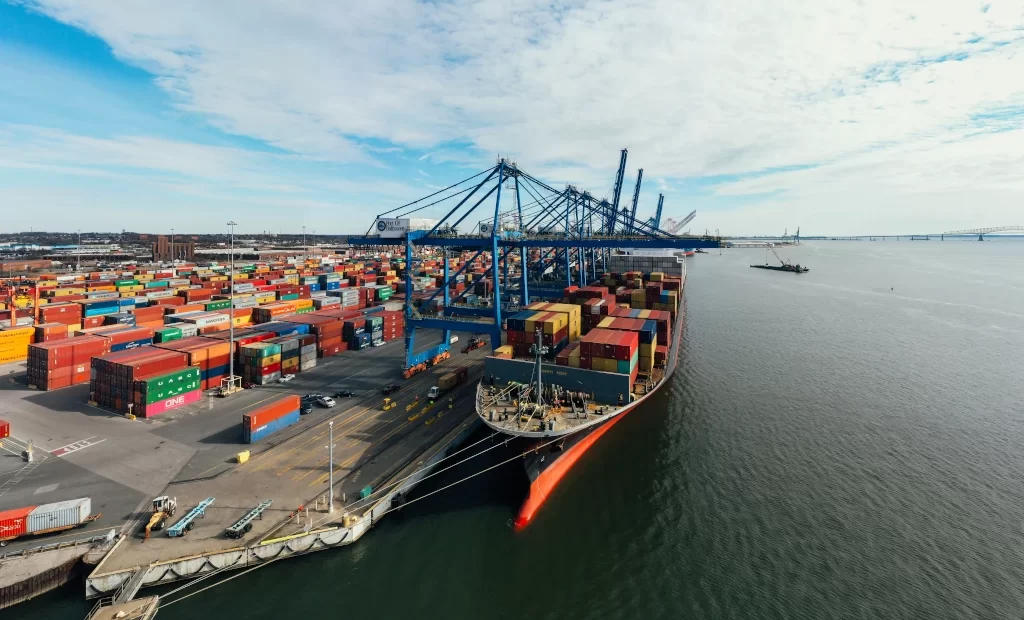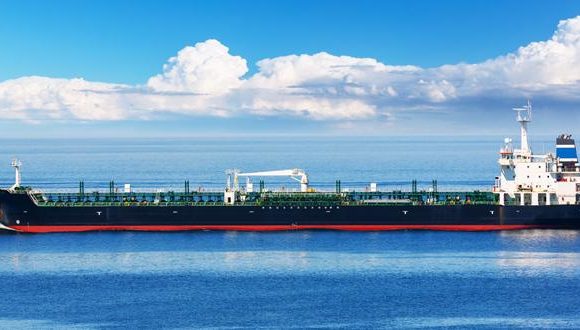Marine Spatial Planning: Optimising Ocean Use for Conservation and Industry

Within the spacious world of our oceans, achieving a delicate balance between conservation efforts and industrial interests needs a strategic approach. Marine Spatial Planning (MSP) emerges as a methodical coordinator, efficiently managing the optimal use of ocean resources. This article systematically covers the details of MSP, exploring its foundational principles, stakeholders, tools, and the nuanced equilibrium it seeks between conservation and industry imperatives.
Introduction to Marine Spatial Planning
Overview of Marine Spatial Planning
Marine Spatial Planning (MSP) is designed to efficiently manage human activities within the marine environment. It aims to allocate space and resources judiciously, ensuring that diverse uses such as shipping routes, fishing grounds, and conservation areas coexist harmoniously.
Importance of Strategic Ocean Use
Amidst escalating demands on ocean resources, a structured approach becomes paramount. MSP serves as a blueprint for sustainable development, taking into account ecological, economic, and social considerations. Its significance lies in establishing a balance that preserves marine ecosystems while supporting industries reliant on ocean resources.
Principles and Framework of Marine Spatial Planning
Defining Marine Spatial Planning
At its core, MSP is a proactive and adaptive process that anticipates the dynamic nature of the marine environment. It involves comprehensive planning, informed decision-making, and continuous evaluation. This definition encapsulates the complexity and foresight required for effective spatial planning.
Guiding Principles for Effective Planning
Successful MSP adheres to a set of guiding principles encompassing transparency, stakeholder engagement, and ecological integrity. The process must be inclusive, ensuring that diverse voices contribute to decisions that shape the sustainable future of our oceans.
Legal and Policy Frameworks
MSP operates within varying legal and policy frameworks globally. Robust legislation is very important, clarifying responsibilities, ensuring compliance, and providing a foundation for international collaboration. A clear legal framework underpins the success of any MSP initiative.
Stakeholders in Marine Spatial Planning
Involvement of Government Agencies
Government agencies play a leading role in MSP, acting as custodians of marine resources and enforcers of regulatory frameworks. Their involvement ensures alignment with national policies and legal requirements, facilitating coordinated and effective spatial planning.
Collaboration with Industry Stakeholders
The success of MSP hinges on collaboration with industry stakeholders. Fishermen, shipping companies, and tourism operators bring valuable insights to the planning table. Integrating their expertise ensures that MSP reflects the realities and needs of those directly impacted by its outcomes.
Engaging Local Communities in Planning Processes
Local communities, often reliant on marine resources for their livelihoods, are integral stakeholders. Ensuring their active participation in MSP processes is vital. By incorporating traditional knowledge and community aspirations, planners foster a sense of ownership and responsibility.
Tools and Technologies in Marine Spatial Planning
GIS and Remote Sensing Applications
Geographic Information Systems (GIS) and remote sensing technologies are indispensable tools in MSP. They facilitate data collection, mapping, and analysis, providing planners with a comprehensive understanding of the marine environment. Accurate spatial data is the cornerstone of informed decision-making.
Data Collection and Analysis Methods
Robust data collection methods, ranging from acoustic surveys to satellite imagery, form the basis of MSP. The accuracy and relevance of collected data directly influence the efficacy of spatial planning. Rigorous analysis methods ensure that decisions are evidence-based and aligned with conservation and economic goals.
Integrating Technology for Decision-Making
As technology advances, MSP evolves. Decision support systems, modelling tools, and scenario planning software aid planners in evaluating alternative spatial arrangements. The integration of technology streamlines the decision-making process, enhancing the adaptability and responsiveness of MSP initiatives.
Benefits of Marine Spatial Planning

Conservation of Biodiversity and Ecosystems
One of the primary benefits of MSP is its contribution to biodiversity conservation. By designating protected areas and managing human activities, MSP safeguards critical habitats, mitigates threats to endangered species, and preserves the delicate balance of marine ecosystems.
Sustainable Resource Management
MSP promotes sustainable resource management by allocating space for activities such as fishing and aquaculture. By preventing over-exploitation and minimizing conflicts, MSP ensures the long-term viability of these industries, fostering economic resilience in coastal communities.
Conflict Resolution and Stakeholder Satisfaction
The structured approach of MSP facilitates conflict resolution by providing a platform for negotiation and compromise. Balancing the interests of diverse stakeholders minimizes conflicts, ensuring that each party gains a measure of satisfaction from the spatial plan’s outcomes.
Challenges and Considerations in Marine Spatial Planning
Balancing Conservation and Economic Interests
The central challenge in MSP lies in striking a balance between conservation and economic interests. Competing demands for space necessitate careful negotiation and compromise. The challenge lies in allocating areas for economic activities without compromising the integrity of critical marine habitats.
Addressing Climate Change Impacts
Climate change adds a layer of complexity to MSP. Rising sea levels, ocean acidification, and shifts in species distributions demand adaptive planning. MSP frameworks must incorporate climate resilience strategies to ensure the longevity of spatial plans in the face of environmental uncertainties.
Ensuring Equitable Access to Ocean Resources
Equity is a fundamental consideration in MSP. Ensuring that the benefits of ocean resources are distributed fairly among stakeholders, including local communities and marginalized groups, is essential. MSP should strive for inclusivity, avoiding disproportionate impacts on vulnerable populations.
International Collaboration in Marine Spatial Planning
Sharing Best Practices Across Borders
MSP extends beyond national boundaries, necessitating international collaboration. Sharing best practices, lessons learned, and success stories ensures that the global community benefits from collective knowledge. Collaborative efforts amplify the impact of MSP on a broader scale.
Joint Conservation Efforts
International collaboration is paramount in addressing transboundary conservation challenges. MSP provides a platform for nations to align their conservation goals, creating interconnected networks of protected areas that benefit migratory species and enhance overall biodiversity.
United Nations Initiatives and Agreements
The United Nations actively promotes MSP through various initiatives and agreements. Bodies such as the Convention on Biological Diversity and the Sustainable Development Goals emphasize the importance of MSP in achieving global conservation and sustainable development objectives.
Case Studies in Marine Spatial Planning
Successful Implementation Stories
Examining case studies of successful MSP implementation offers valuable insights. From the Great Barrier Reef Marine Park in Australia to the North Sea Spatial Planning in Europe, real-world examples showcase the positive outcomes of strategic spatial planning.
Lessons Learned from Challenges
Learning from challenges is integral to refining MSP approaches. Case studies highlighting obstacles, such as conflicting stakeholder interests or unforeseen environmental impacts, provide essential lessons for future planning initiatives.
Adaptations and Innovations in Planning Strategies
Dynamic environments demand adaptive planning. Case studies exploring how MSP frameworks have evolved and adapted to changing circumstances shed light on innovative strategies that enhance the resilience and effectiveness of spatial plans.
Future Trends and Innovations in Marine Spatial Planning
Emerging Technologies in Planning
The future of MSP is intertwined with emerging technologies. Artificial intelligence, machine learning, and advanced sensors offer new avenues for data collection, analysis, and decision-making. Incorporating these technologies into MSP frameworks enhances the precision and agility of planning efforts.
Shaping Policies for Sustainable Development
As MSP matures, it will play a pivotal role in shaping national and international policies for sustainable development. The integration of MSP principles into broader policy frameworks ensures a cohesive approach to managing ocean resources and supporting sustainable industries.
Adapting to Changing Environmental Conditions
Environmental conditions are in a constant state of flux. Future MSP initiatives must be adaptive, capable of responding to changing climate patterns, shifting species distributions, and emerging threats. Flexibility in planning strategies is paramount for long-term success.
Conclusion: Harnessing Marine Spatial Planning for a Sustainable Future
Summary of Key Findings
In the tapestry of ocean management, Marine Spatial Planning emerges as a critical thread, weaving together conservation and industry. A comprehensive understanding of its principles, benefits, and challenges underscores its pivotal role in fostering sustainable ocean use.
Looking Ahead: Integrating Conservation and Industry through Strategic Planning
As the world faces unprecedented environmental challenges, the role of MSP becomes increasingly vital. By embracing inclusive stakeholder engagement, leveraging cutting-edge technologies, and adapting to evolving environmental conditions, MSP charts a course towards a future where our oceans thrive amidst strategic, sustainable, and harmonious use.
Facts and Statistics
Growing Importance of MSP: According to the Intergovernmental Oceanographic Commission (IOC) of UNESCO, MSP has gained increasing importance globally as a key strategy for sustainable development and management of marine resources.
Economic Contribution of Oceans: The World Wildlife Fund (WWF) estimates that the oceans contribute over $2.5 trillion annually to the global economy, supporting industries such as shipping, fisheries, tourism, and energy.
Pressure on Marine Ecosystems: The Food and Agriculture Organization (FAO) reports that over 90% of global fish stocks are either fully exploited or overexploited, highlighting the need for careful planning to ensure sustainable fisheries.
Biodiversity Concerns: The International Union for Conservation of Nature (IUCN) emphasises the critical role of MSP in conserving marine biodiversity, as over 80% of the world’s biodiversity is found in marine environments.
Impact of Climate Change: MSP is becoming increasingly important in the face of climate change. According to the National Oceanic and Atmospheric Administration (NOAA), rising sea levels and changing ocean conditions are affecting marine ecosystems, requiring adaptive planning.
Success Stories: The Great Barrier Reef Marine Park Authority in Australia is often cited as a successful example of MSP. The Great Barrier Reef Marine Park Authority’s zoning plan is a comprehensive spatial management approach that balances conservation and multiple uses.
Challenges of MSP: The World Bank reports that challenges in implementing MSP include the need for cross-sectoral collaboration, addressing data gaps, and incorporating the interests of various stakeholders.
Role in Achieving Sustainable Development Goals (SDGs): MSP is integral to achieving several SDGs, including Goal 14 (Life Below Water) which focuses on the conservation and sustainable use of oceans.
Technological Advancements: Advances in technology, such as satellite imaging and Geographic Information System (GIS) tools, are enhancing the effectiveness of MSP by providing more accurate and up-to-date spatial data.
Resources
International Coastal and Ocean Organization (ICO).
Journal of Marine Biology and Oceanography.
Reviews or articles discussing the latest technologies and tools shaping MSP practices.
Compilation of successful MSP implementation stories.
Provided by international organizations like the United Nations Division for Ocean Affairs and the Law of the Sea (DOALOS).
Marine Spatial Planning – the need for a common language.
Marine Spatial Planning Assessing net benefits and improving effectiveness
Orkney Harbour – BQUA Plus Test Kit Evaluation For A Local Port Authority Ballast Water Policy















